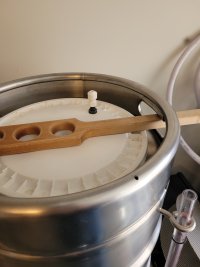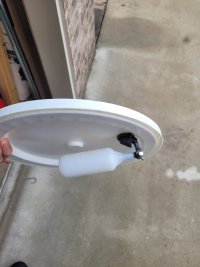Maybe @Buckeye_Hydro will see this, or maybe someone else knows the answer?
Is there any reason I can’t put a tee in the line to my RO system’s storage tank and hook up a second tank? I don’t have room under my sink for a larger tank, but I do have room for a couple of smaller ones.
Is there any reason I can’t put a tee in the line to my RO system’s storage tank and hook up a second tank? I don’t have room under my sink for a larger tank, but I do have room for a couple of smaller ones.




































![Craft A Brew - Safale BE-256 Yeast - Fermentis - Belgian Ale Dry Yeast - For Belgian & Strong Ales - Ingredients for Home Brewing - Beer Making Supplies - [3 Pack]](https://m.media-amazon.com/images/I/51bcKEwQmWL._SL500_.jpg)






















